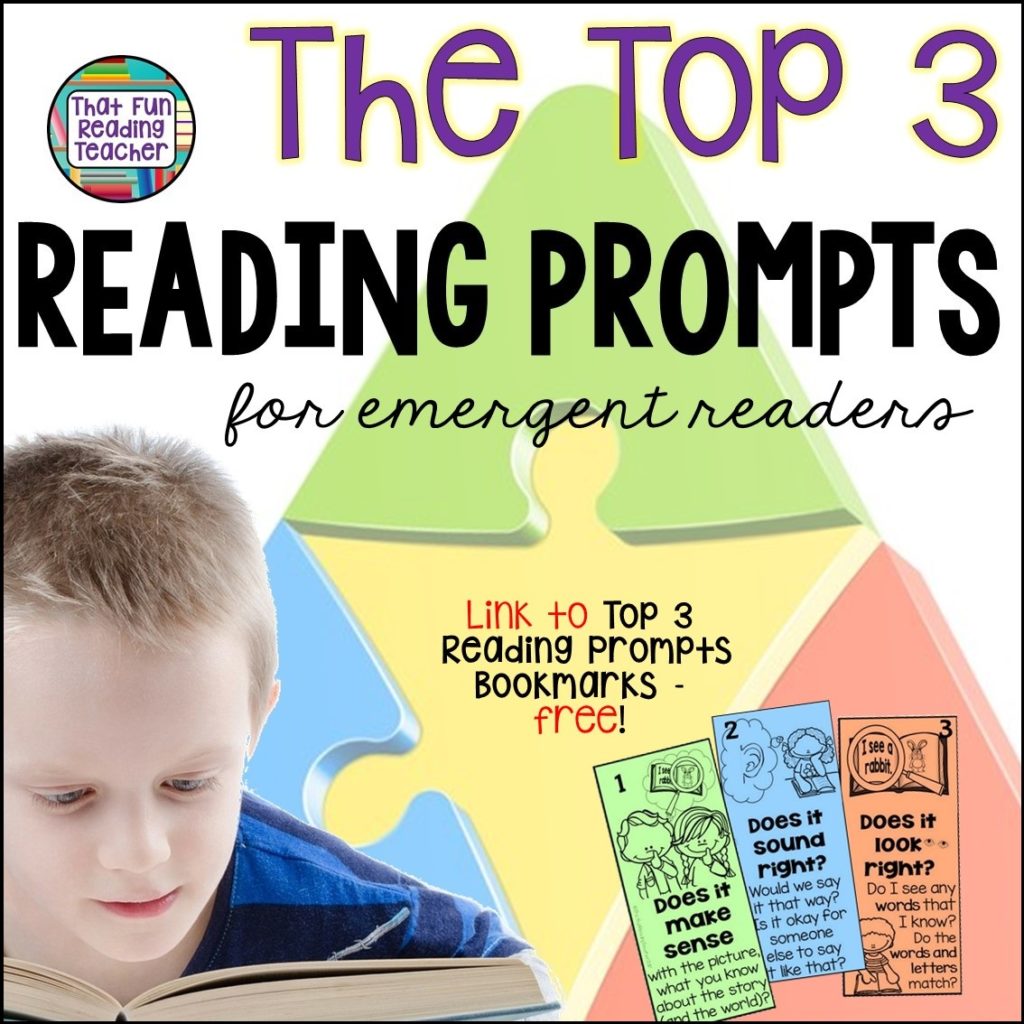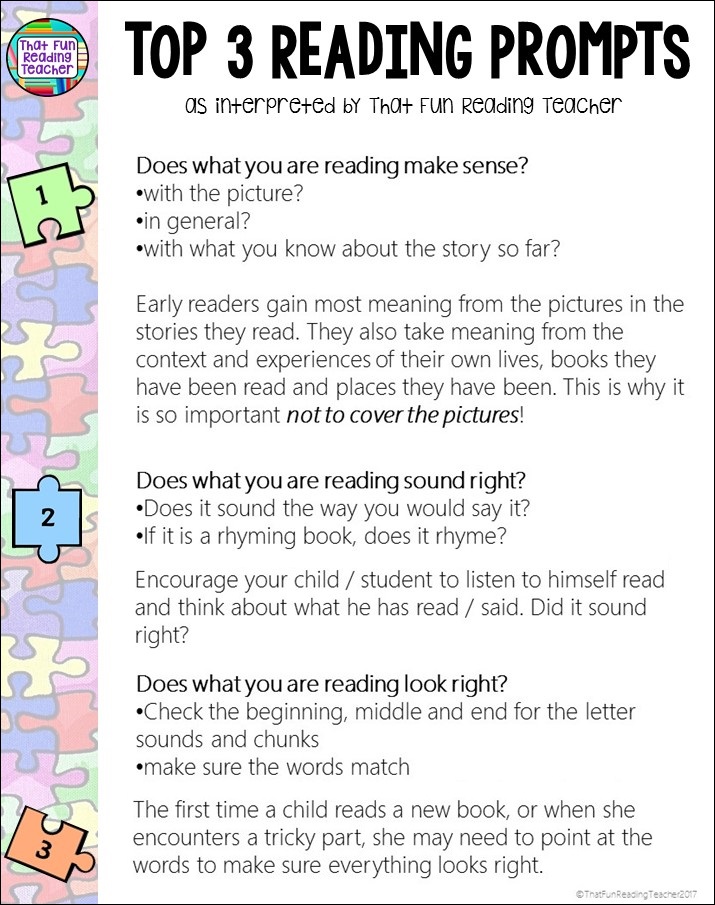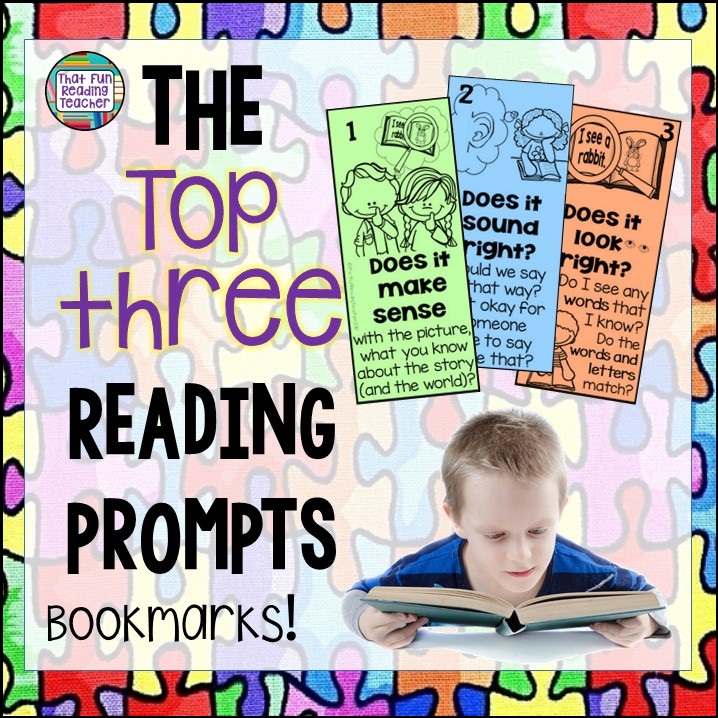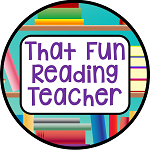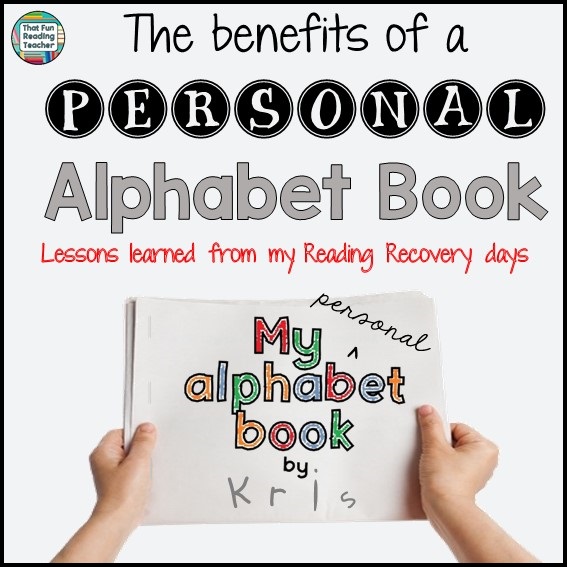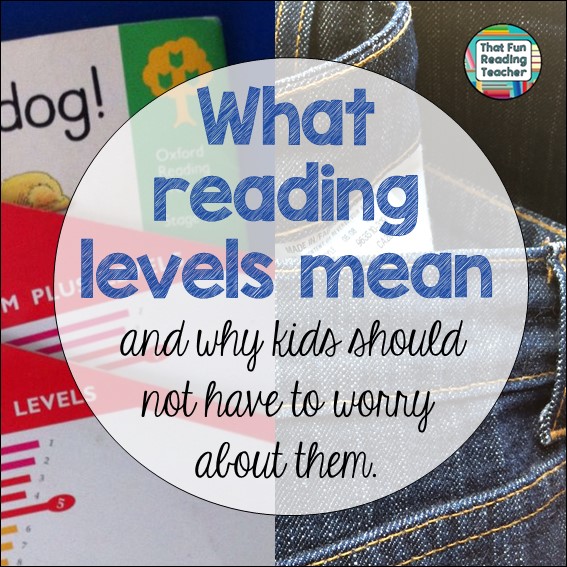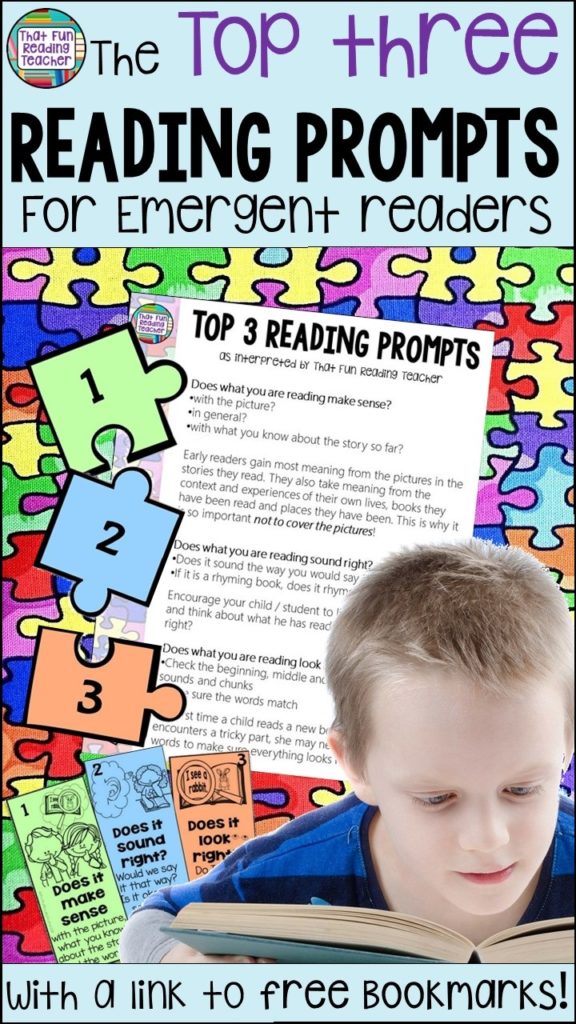Are you teaching emergent readers the very basics of reading, and overwhelmed by the number of reading prompts to choose from?
The following top three prompts form the basis of what good readers naturally do. The founder and creator of the Reading Recovery program, Marie Clay, studied the strategies proficient readers used. To put it simply, her research showed that children have the most success reading when they use meaning as their primary source of information (ensuring the story made sense), language structure (how the words sound together, ordered properly in the manner we would use them in speaking the language) and the ‘visual information’ (the ‘looking’ at the words, letters, punctuation, etc. part of reading).
Clay makes the following points about prompts in the 2005 edition of Literacy Lessons: Part One:
A prompt is a call for action to do something within his [the child’s] control. Prompts are not just talk. How you prompt depends upon where this child is at this point of this text, and what else needs to be integrated into his reading processing. The prompt should send the child in search of a response in his network of responses. Too much prompting interferes with the development of independent solving. (p.39)
Here is a brief summary of the three top reading prompts:
Why three prompts?
These three prompts are the foundation of what good readers do. Good readers make sure that what they read makes sense, sounds right and looks right. Other strategies fall under these, and do have their place. It can get complicated for kids to have to memorize a long list of strategies. My students have had most success when they know the top three prompts initially, then additional strategies (i.e. Chunky Monkey) for something that they truly need prompting for.
The three top prompts bookmarks – free!
What has been your experience with using reading prompts to teach emergent readers? Please share in the comments!
Happy Reading!
Ida Mae
Related:
